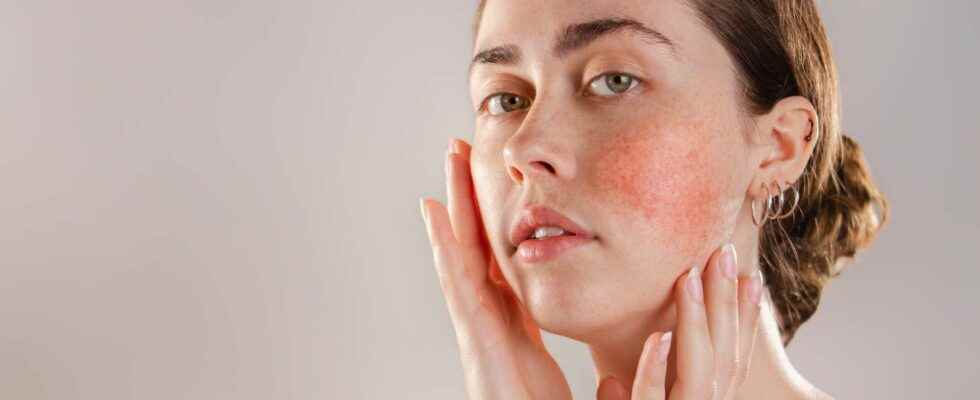Couperose or rosacea is a disease of the skin that displays, is visible and can generate complexes. It affects the blood vessels of the face. It results in redness, mainly on the cheeks but also the nose, forehead and chin. What are the treatment options? What to do to alleviate the symptoms?
You will also be interested
[EN VIDÉO] Platelets patrol the blood vessels Platelets (in red) travel through blood vessels and interact with Kupffer cells (in blue), which are the resident macrophages of the liver. In this way they can detect the presence of infectious agents.
The rosacea is a chronic disease, which affects women much more often than men. It often appears around the age of 30 and can then disappear around the age of 60. It is the consequence of a dilation abnormal blood vessels under the skin, which become visible to the naked eye.
To reduce rosacea, it is important to know the elements that can trigger it or aggravate it: exposure to Sun or to windsudden changes in temperature, activity physical intense, of fevera alcohol consumption, spicy food, strong emotion. The triggering factors can be different from one patient to another. It is up to everyone to identify them and then avoid them, as far as possible.
Alcoholic, perfumed or particularly greasy cosmetic products should be avoided in all cases. Regarding make-up, products called “non-comedogenic” are to be preferred so as not to clog the pores of the skin. facial skin must be carefully cleaned morning and evening, even in the absence of make-up.
What is the background treatment?
The basic treatment aims to reduce the symptoms and to control the progression of the disease. There is no treatment curative or definitive.
the vascular laser reduces the dilation of the vessels. Having a purely aesthetic aim, it is not covered by health insurance. It must be done by a dermatologistin winter, on non-tanned, non-inflammatory skin, apart from flare-ups. The number of sessions depends on the extent and intensity of rosacea. It is possible that the latter will return a few months or a few years after the treatment. In this case, maintenance sessions are necessary.
There is also a gel cutaneous, based on brimonidine. Its vaso-constrictor action limits redness for 8 to 10 hours. It is not reimbursed but requires a prescription. It should be applied in a thin layer once a day, in the morning.
What is the treatment for flare-ups?
In some people, rosacea can take on a papulo-pustular form during outbreaks or attacks. In this case, local treatment with metronidazole will be prescribed by the dermatologist. This is a cream to be applied once a day in the evening. The treated area should not be exposed to the sun. In the most severe forms, an oral antibiotic treatment can be associated (doxycycline). It reduces papules and pustules but not redness. The treatment usually lasts 1 month.
Interested in what you just read?
Subscribe to the newsletter Health question of the week : our answer to a question you ask yourself (more or less secretly). All our newsletters
